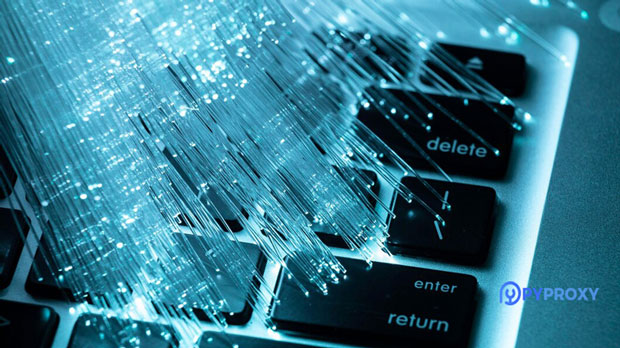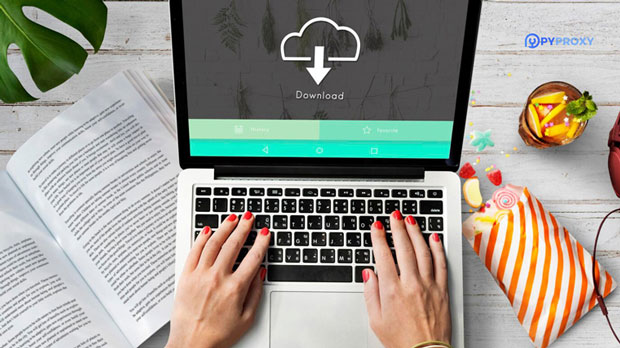In today’s digital world, where data privacy, web scraping, and API management are critical components of online services, the demand for efficient, reliable, and high-performance proxy solutions has skyrocketed. PYPROXY Static Proxy Package stands out as a robust tool that promises to combine both stability and high performance. Designed to handle a vast range of tasks, from web scraping to securing online transactions, this proxy package is gaining significant attention for its ability to deliver uninterrupted service with speed and security. This article aims to explore its features, advantages, and use cases, providing valuable insights for businesses and developers seeking reliable proxy solutions. Understanding the Need for Proxy ServicesTo truly appreciate the significance of PYPROXY, it's essential first to understand the role of proxies in modern internet infrastructure. A proxy server acts as an intermediary between a client (such as a user’s device) and the server hosting the desired content. The primary function of a proxy is to route client requests, which helps in improving security, bypassing geo-restrictions, and anonymizing online activities.Proxies are also critical for high-volume operations like web scraping, where requests to external websites need to be made without being detected or blocked. In these scenarios, static proxies, which offer consistent IP addresses, are particularly beneficial as they reduce the likelihood of detection and blocking.What is PYPROXY and How Does it Work?PYPROXY is a package designed to offer static proxy solutions for developers, businesses, and enterprises. Its functionality revolves around providing static IP addresses that are reliable, secure, and optimized for high-performance use cases. Unlike rotating proxies, which change IP addresses frequently, static proxies are fixed, making them ideal for applications requiring consistency in identity, such as logging in to websites, accessing region-locked content, or managing online accounts.The working principle of PYPROXY involves sending requests through a stable proxy server, which handles the traffic while masking the original IP address. This ensures anonymity, reduces the chances of IP bans, and ensures that users can operate without interruptions, whether they’re scraping data or managing multiple online accounts.Key Features of PYPROXY Static Proxy Package1. Stability and Reliability One of the most significant advantages of PYPROXY is its stability. Unlike dynamic proxies, which can cause issues such as IP rotation that disrupts sessions, static proxies provide a continuous connection, which is crucial for long-term tasks such as web scraping or account management. This consistency ensures that businesses can maintain uninterrupted operations, avoid security breaches, and reduce the overhead caused by connection issues.2. High Performance and Speed In terms of performance, PYPROXY is designed for high-speed connections. It ensures minimal latency in proxy connections, which is critical for tasks such as real-time data scraping, API interactions, and other time-sensitive operations. This feature is especially beneficial for businesses that need to gather large amounts of data in short periods, where even slight delays can result in lost opportunities.3. Scalability PYPROXY is highly scalable, meaning it can accommodate both small businesses and large enterprises. Whether you need a few proxies for personal use or thousands for large-scale operations, PYPROXY can efficiently manage increasing demands without compromising on performance.4. Secure and Anonymized Connections Security is another key benefit of the PYPROXY package. With increasing concerns around data privacy, PYPROXY provides a secure method of conducting web traffic, ensuring that sensitive information such as login credentials, payment details, and other personal data are protected. The anonymization feature further enhances security, making it harder for websites to track user activities or block IP addresses.5. Ease of Integration and Use PYPROXY is designed to be user-friendly, with an intuitive interface that makes it easy to integrate into existing systems. Developers can quickly add proxy functionality to their applications without extensive setup. Additionally, the package supports various programming languages and platforms, making it accessible to a wide range of users.Applications of PYPROXY Static Proxy Package1. Web Scraping and Data Collection One of the most common use cases for PYPROXY is web scraping. Web scraping is an essential tool for businesses that rely on large datasets to make data-driven decisions. Whether scraping competitor prices, market trends, or user feedback, static proxies ensure that these activities are done securely and without interruptions. Since static proxies maintain the same IP address, websites are less likely to detect or block scraping attempts.2. Secure Online Transactions PYPROXY can also be employed for securing online transactions. In sectors such as e-commerce, banking, and finance, conducting secure and anonymous transactions is paramount. By masking a user’s real IP address, PYPROXY protects sensitive data from potential breaches or malicious attacks. It’s particularly useful for users who need to access services from geo-restricted regions while ensuring their data remains safe.3. Managing Multiple Accounts Another significant application of PYPROXY is in the management of multiple online accounts. This is particularly useful for businesses running multiple social media accounts, ad campaigns, or user profiles. Since static proxies maintain consistent IP addresses, they allow users to manage their accounts without being flagged for suspicious activity.4. Bypassing Geo-Restrictions Many online services and content are geo-blocked, meaning they are only accessible from certain regions. With the help of PYPROXY, users can access restricted content by routing their requests through proxies located in the target region. This allows businesses to tap into international markets and access valuable data, all while maintaining security and anonymity.Conclusion: Why PYPROXY is a Top Choice for BusinessesThe PYPROXY Static Proxy Package offers an exceptional balance of stability, performance, and security, making it an ideal choice for businesses, developers, and individuals who require high-performance proxy solutions. By providing a reliable and consistent IP address, PYPROXY ensures uninterrupted operations for web scraping, secure transactions, and managing multiple accounts. Its ability to offer high-speed connections and secure, anonymized browsing further enhances its value, especially for industries that rely on large-scale data collection or need to bypass geo-restrictions. Despite the cost and management considerations, PYPROXY is undoubtedly a powerful tool that can drive success for businesses looking to scale their operations securely and efficiently.
Nov 14, 2025



































































